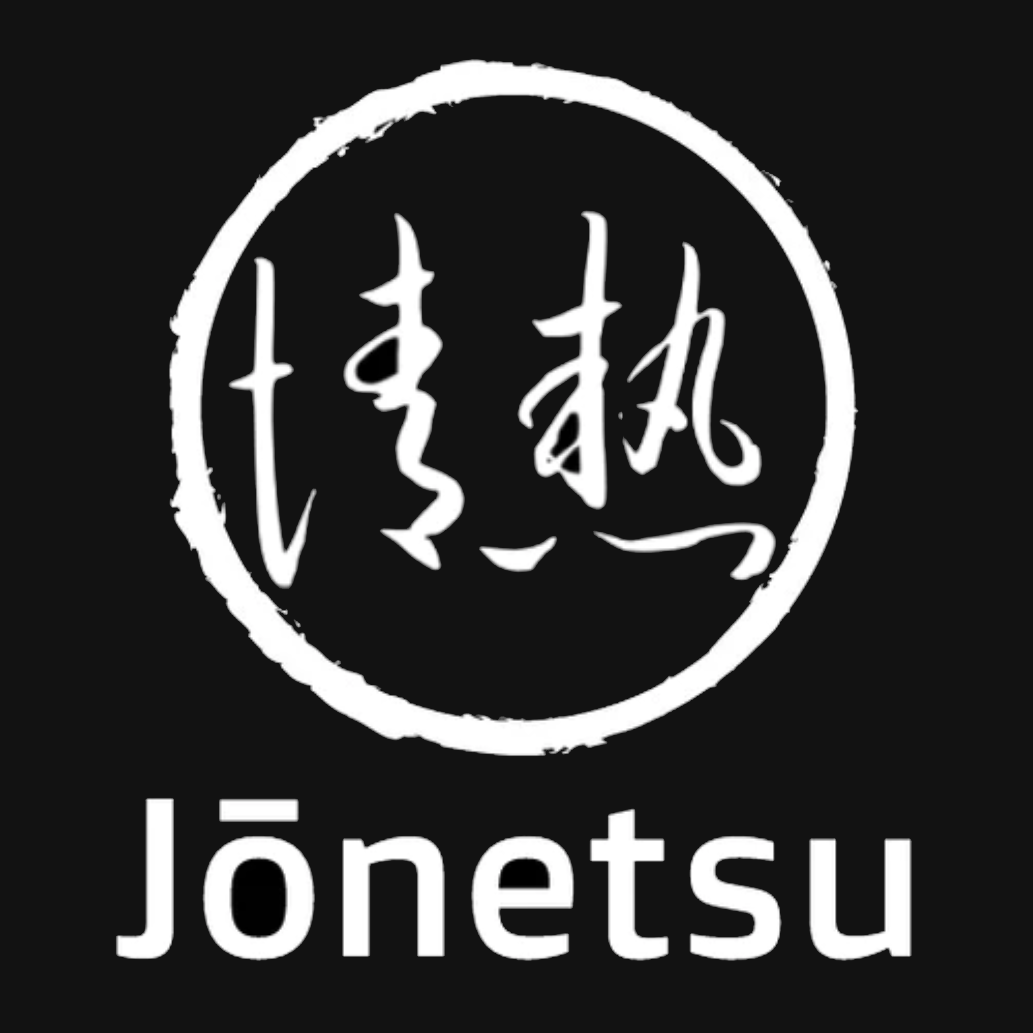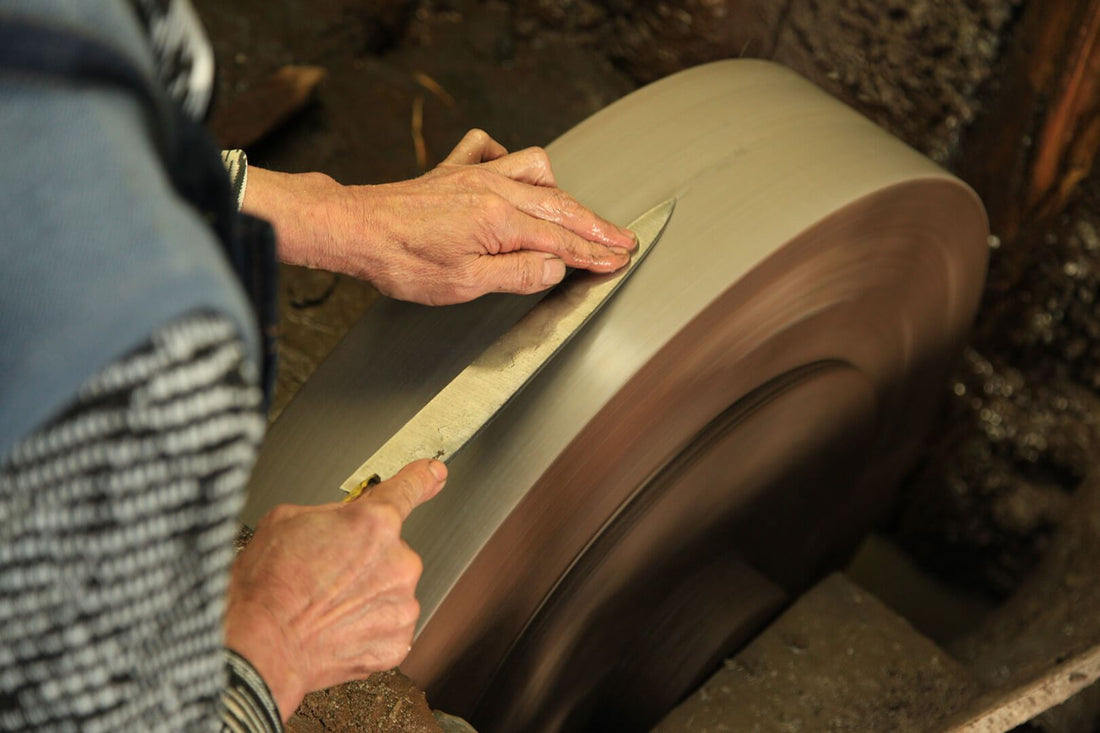Introduction
Japanese kitchen knives, renowned worldwide for their precision and craftsmanship, are the result of a meticulous and labor-intensive manufacturing process that has been refined over centuries. In this step by step exploration, we delve into the intricate processes involved in creating these exceptional culinary tools, shedding light on the division of labor and the traditional techniques that define Japanese knife making.
Forging (鍛治): Crafting the Foundation
The journey of a Japanese kitchen knife begins with the "forging" process, where the ji (地), or the metal body part, is meticulously created. This ji serves as the foundation upon which the knife's functionality and longevity depend. Forge welding iron and steel is a fundamental step in this process, requiring multiple hammering sessions by the blacksmith to temper the metal, and slowly coaxing it into the desired shape without introducing any serious factures that would result in poor structural integrity in the finished process.
The ji is meticulously shaped, heated until it glows red-hot, and then hammered repeatedly to attain the desired thickness and curvature. This painstaking endeavor is further divided into ten separate steps, requiring increasing care and attention to detail from the artisan to produce the steel piece that will eventually be transformed into the blade of the knife, requiring both a substantial amount of time and expertise.
Haganekiri (刃金切): Forming the Base
Japanese knives are renowned for their exceptional sharpness, and achieving this sharpness begins with the “haganekiri” or base making and cutting process. High carbon steel, chosen for its hardness and ability to retain a razor-sharp edge, is forge-welded to a base made of dead-soft iron. The high carbon steel is heated until it glows red-hot and is then meticulously hammered into a thin edge, setting the stage for precise cutting.
During the haganekiri process, the knife blank is heated, shaped, and cut into an appropriate length to form the edge. The knife makers’ primary focus for this stage is to ensure that the blade's geometry is perfect, setting the foundation for the knife's cutting performance.
Tanzo (鍛造): Forging Mastery
The “tanzo” process involves heating the dead-soft iron until it's red-hot, coating it with borax and iron powder, and then welding it to the high carbon steel body. Borax and iron powder play a crucial role in eliminating impurities from the metal, ensuring the blade's purity and strength.

Once the initial welding is complete, the blade is subjected to further heat treatment. It is heated in a kiln to a temperature of around 1000°C, a critical step in achieving the desired hardness and durability. During this phase, the ji is carefully manipulated to create "hankei" (半形), a slight curvature in the blade that aids in the chef’s slicing and chopping motions.
The process of heating and hammering is repeated until the blade reaches its desired thickness. This repetitive cycle, performed with meticulous attention to detail, ensures that the blade maintains its maximum structural integrity for a knife that will not easily dent or dull.
Seikei (成形): Shaping the Blade
The “seikei”, or shape forming stage, marks the transition from a rough piece of high carbon steel and iron, into a refined blade. An essential step is creating "urasuki" (裏すき), the mild concave on the backside of the knife crucial for sharpness. The excess material is removed according to the knife's shape, and the surface is smoothed using grinders and buffers to remove the rough debris that have formed on the surface of the metal during the repeated heating process.

During the shaping process, the artisans work meticulously to create the unique profile and geometry that define each style of Japanese knife, whether it's a versatile gyuto or a specialized deba. The attention to detail in this phase is critical to achieving the knife's intended function.
Yakiire and Yakimodoshi (焼入れ・焼戻し): Quenching and Tempering
Yakiire, or quenching, is a vital step in the Japanese knife-making process. The primary purpose is to prevent decarburization, the phenomenon where the carbon content in steel decreases over time. This happens when steel is heated to temperatures above 750°C, at which point free hydrogen and oxygen in the air can bond with carbon atoms in the steel, lowering the carbon content. As a high carbon content is what gives Japanese kitchen knives their superior strength and durability, this must be prevented.
To achieve this, the blade is covered with mud and allowed to dry. Traditional pine charcoal is used in this process. The blade is heated to 750°C to 800°C in a kiln and then rapidly cooled in water to harden the steel. Subsequently, the blade is reheated at 150°C to 200°C, employing the "yakimodoshi" natural cooling method. This meticulous balance between hardness and tenacity defines the quality of Japanese knives.
The quenching and tempering process is a defining moment in a knife's journey. The precise control of temperatures and cooling rates ensures that the blade achieves its ideal hardness while maintaining the necessary flexibility. The ability to reliably perform such feats is a testament to the masterful craftsmanship of artisans who have developed their skills through generations.
Fixing Deformation (歪を調整し): Achieving Precision
The dead-soft iron part of the knife tends to shift toward the hard carbon steel part during the heat treatment process, resulting in deformation. Skilled craftsmen use hammers to make precise adjustments, ensuring that the blade is perfectly straight and symmetrical. The blade's surface is then finely sanded with abrasive paper to achieve a flawless finish, enhancing both its appearance and functionality.
Hatsuke (刃付): Creating the Edge
Creating the edge, or "hatsuke," is where the knife fully transforms from steel and metal into an elegant and precise instrument. Over ten distinct processes are involved in crafting the knife's edge.
It begins with “aratogi” (荒研ぎ), or rough sharpening, where dirt is removed from the ji using a vertical sharpening wheel. Wooden molds are used to press the ji against the wheel, thinning the edge. The blade is then moved onto “hiratogi” (平研ぎ) for flat sharpening, where the ji is ground down until it becomes flat from the ridge to the spine. If it is discovered at this stage that the urasuki was made with minor imperfections, it is corrected using a hammer and chisel. Once complete, the artisan begins “hontogi” (本研ぎ) for fine sharpening using smooth, natural sharpening stones, to set the angel of the knife’s edge.

Finally, the blade undergoes “bafuate” (バフ当て), where its surface is polished for a mirror finish, “kidoate” (木戸当て), which the blade is further polished against a sharpener made of pine tree, and “bokashi” (ぼかし) which uses the powder from natural sharpening stones to crate the hazy, watery tarnish called “kasumitogi” (カスミ研ぎ).
Each step in the hatsuke process requires exceptional skill, patience, and attention to detail. The angle of the knife's edge, the precision of the sharpening, and the final polish all contribute to the blade's extraordinary sharpness and gives Japanese kitchen knives the signature beauty for which they are beloved and sought after.
Etsuke (柄付): Attaching the Handle
With the blade perfected, the seal and signature are then engraved onto the finished blade with a hammer and chisel, signifying its authenticity and craftsmanship before it is moved to the final phase, “etsuke”, which focuses on attaching the handle to the blade.

Craftsmen specialize in creating a wide array of handles to suit different knives. Some knife makers purchase handles from specialized carpenters, while we at Jõnetsu produce our own handles from various native Japanese wood to find the best fit for our knives.
Before attachment, the “nakago” (柄), or tang, is heated to facilitate the process. Once attached, any remaining distortions in the knife are carefully corrected.
Conclusion
The manufacturing process of Japanese kitchen knives is a testament to the fusion of tradition, skill, and dedication. Each knife undergoes a meticulous journey, from the forging of the metal body to the creation of a razor-sharp edge and the attachment of a carefully crafted handle.
This process, divided among skilled artisans, results in culinary tools that are not only renowned for their precision but also deeply embedded in Japanese culture and craftsmanship. Whether used by professional chefs or home cooks, Japanese kitchen knives are a testament to the enduring spirit of craftsmanship that continues to shape their legacy. This dedication to perfection ensures that these knives are not only tools but also works of art, admired and cherished by culinary enthusiasts worldwide.
The transformation from a lump of steel into a beautiful piece of Japanese kitchen knife takes our artisans over 30 hours from start to finish. If you would like to bring one of these meticulously crafted knives into your kitchen, click here to check out our catalog, or click here to read our guide on picking the perfect Japanese kitchen knife for you!

